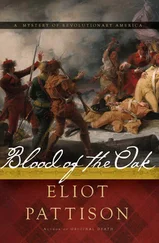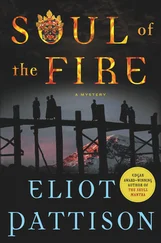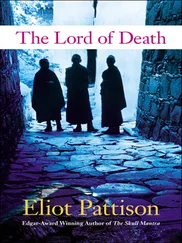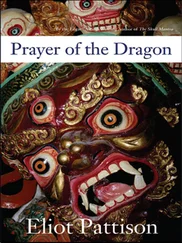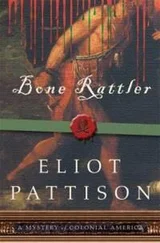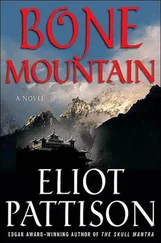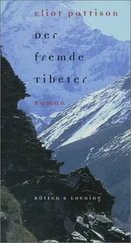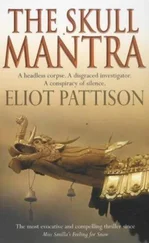Eliot Pattison - Beautiful Ghosts
Здесь есть возможность читать онлайн «Eliot Pattison - Beautiful Ghosts» весь текст электронной книги совершенно бесплатно (целиком полную версию без сокращений). В некоторых случаях можно слушать аудио, скачать через торрент в формате fb2 и присутствует краткое содержание. Жанр: Полицейский детектив, на английском языке. Описание произведения, (предисловие) а так же отзывы посетителей доступны на портале библиотеки ЛибКат.
- Название:Beautiful Ghosts
- Автор:
- Жанр:
- Год:неизвестен
- ISBN:нет данных
- Рейтинг книги:5 / 5. Голосов: 1
-
Избранное:Добавить в избранное
- Отзывы:
-
Ваша оценка:
- 100
- 1
- 2
- 3
- 4
- 5
Beautiful Ghosts: краткое содержание, описание и аннотация
Предлагаем к чтению аннотацию, описание, краткое содержание или предисловие (зависит от того, что написал сам автор книги «Beautiful Ghosts»). Если вы не нашли необходимую информацию о книге — напишите в комментариях, мы постараемся отыскать её.
Beautiful Ghosts — читать онлайн бесплатно полную книгу (весь текст) целиком
Ниже представлен текст книги, разбитый по страницам. Система сохранения места последней прочитанной страницы, позволяет с удобством читать онлайн бесплатно книгу «Beautiful Ghosts», без необходимости каждый раз заново искать на чём Вы остановились. Поставьте закладку, и сможете в любой момент перейти на страницу, на которой закончили чтение.
Интервал:
Закладка:
They were red discs, bearing computer-printed labels. Nei Lou, the labels warned. Classified, a state secret. Below the legend were a series of numbers, ten digits all the same, followed by a hyphen and a single digit. Number one on the first disc, two on the second, through six. He handed the last disc to Yao, who inserted it into the computer.
“This computer may be all I need,” the inspector said, then blinked in confusion as the photograph of a familiar building from Beijing appeared on the screen. “The Museum of Antiquities,” he said in a puzzled tone. “Ming’s museum.” The photo faded and the words Nei Lou appeared, in huge figures that filled the screen. A moment later the screen was filled with dense, tiny ideograms under the heading Chapter Forty-five.
“Another neyig, ” Shan said in confusion. “A pilgrim’s guide.”
Shan gazed at the discs with the emblem of Ming’s museum, then as Yao continued to scroll through the files, he probed the room again. On a small table by the bed was a cigar box, filled with photographs. He quickly leafed through them, seeing none that showed Zhoka or the village, then returned to those on top. People were gathered in front of a house, all Westerners except for Lodi, who stood in the center. His English cousins, including a younger Elizabeth McDowell. There were tourist shots from England, capturing castles and cathedrals.
In a separate envelope on the bottom were photos of a different set of people, taken in a sandy, windblown place. It appeared to be an archaeological excavation. He saw Elizabeth McDowell kneeling in the dirt, Director Ming beside her. Shan stared at the next photo a long time, not believing his eyes, looking toward Yao, then back at the photo. It was a group picture that included McDowell, Ming, and a number of Chinese who had the air of scientists, some wearing aprons, some holding hammers and chisels. At Ming’s side was Lodi, and in the center of the group, more photogenic than the others, was a well-dressed Western man. At one of his shoulders was a huge man with the features of a Mongolian, a short cigar jutting from his mouth. At the other shoulder was a thin-faced Han who was looking at the Westerner, not the camera, highlighting his crooked nose. Shan put the photo in his pocket, then added the next one, which showed the same group lifting glasses in a toast, inside a large tent at a banquet table on which stood small flags of the People’s Republic and the United States.
A deep bellow broke the silence in the cottage. Yao’s head shot up and he slammed the top of the computer down. Shan darted out of the room, through the central chamber and onto the porch. From the next level someone was blowing a dungchen, one of the long telescoping horns used to summon monks at a gompa.
As Shan and Yao jogged up the rock steps, the horn stopped blowing, and jubilant cries came from a handful of villagers who bounded down the steps from the upper levels, toward the long frame building beyond the gardens. Shan paused, stopping Yao behind him, and watched as the Tibetans ran inside the building.
By the time Shan and Yao reached the gardens everyone else except a man who stood like a guard at the stairs to the fifth level, was inside the elegant building. They stepped into a small chamber with a workbench holding a nearly completed statue of a deity with the head of a horse. Beyond the workshop was a large chamber, its arched passageway flanked on both sides with large prayer wheels handsomely worked in bronze, with the mani mantra inscribed in gilt lettering near the top rim on each and small images of the sacred symbols worked into the sides. Shan paused at the first, realizing he had seen a nearly identical wheel before, bent and corroded, lying half buried at Zhoka.
The building appeared to be divided into two great halls, the first of which had the air of a temple except it had no altar. The Tibetans had apparently gathered in the second hall but Shan paused, studying the first room. Incense burned in several small samkang. Along the edge of the room, lining the walls, were bronze statues on pedestals. Shan had seen similar statues before, in temples and gompas, even in museums, but never had he seen so many. Through the haze of the incense he counted forty of the bronze images, some only a few inches high, others two feet or more. He saw Lokesh standing, seemingly entranced, in front of one of the statues. Inside the perimeter of statues were tables, defining a central square in the chamber, and inside the square were a dozen stretching frames used for painting thangkas, cushions in front of each frame for an artist to sit, pigments and brushes by most of the cushions. But only one cushion was occupied.
A middle-aged woman sat at a frame, contemplating her unfinished work, on which the images had been outlined in pencil. The woman gave no acknowledgment as Shan and Yao approached. She was completely absorbed in her painting, though her brushes were at her side. She seemed deeply troubled, and repeatedly glanced past the stretched cotton cloth toward another, completed thangka that sat ten feet away, still in its frame, surrounded by burning butter lamps.
“Did you see?” an excited voice asked from behind Shan. Lokesh had found Shan. “Did you see?” Lokesh repeated, gesturing toward the completed thangka.
Shan stepped closer, recognizing the style. “Impossible,” he gasped. “It’s Surya’s. But it can’t be.”
“It can only be,” Lokesh said in a confident, yet wondrous tone.
“My children and I found him on a mountain when we were visiting our cousins who herd above the valley,” a soft voice interjected. “He was painting a Buddha on a rock.” The painter spoke from where she sat, still staring at the unfinished face of her deity. “We were scared at first. My children had not seen a red robe their entire lives. I had not seen one for decades. Some would have said it was a ghost. We crept closer, not thinking he saw us as we hid under a ledge thirty paces away. But then he turned and he had the end of a brush balanced on his nose, and spread his arms like bird wings. My children could not stop their laughter. He came and sat in front of us. He called us rock pikas, and began squeaking like one.”
The woman rose with a sad smile and approached the finished thangka. “When we crawled out he asked us to meet the deity he had painted. I started to cry. I don’t know why. I cried like a little girl, then after a long time he took my hand and placed it on the deity. Something seemed to shoot through my arm, a strange tingling, and then it seemed like what was crying was not part of me anymore.”
“But when did he come here?” Shan asked.
“We brought him nearly a year ago, for his first visit. Most of us had stopped painting years ago, working only in the metal shops. He helped us discover what was wrong.”
“Wrong?”
The woman wrung her hands. “For centuries our people had helped make paintings for the earth temple. The living god paintings. There are old books here that speak of how a lama once came here and said he had entered one of the heavens where blessings fell off the tips of brushes and homes for gods were made of cotton and pigment.” She looked at her hands as she spoke, as if embarrassed.
“But we lost the way,” she continued after a moment. “We could make the things collectors wanted, even museums, but not the ones that could serve in temples. We lost the ways of spreading fire onto the cloth. Lodi said it didn’t matter anymore, because there were no more temples, that we made no money from temples. But we knew better. My father was one of our best painters in generations and he spent half his time praying. Then we had terrible winters, three in a row, when all the old ones died. I think we forgot how to pray.” She turned and nodded a greeting to Liya, who was standing by Surya’s painting now.
Читать дальшеИнтервал:
Закладка:
Похожие книги на «Beautiful Ghosts»
Представляем Вашему вниманию похожие книги на «Beautiful Ghosts» списком для выбора. Мы отобрали схожую по названию и смыслу литературу в надежде предоставить читателям больше вариантов отыскать новые, интересные, ещё непрочитанные произведения.
Обсуждение, отзывы о книге «Beautiful Ghosts» и просто собственные мнения читателей. Оставьте ваши комментарии, напишите, что Вы думаете о произведении, его смысле или главных героях. Укажите что конкретно понравилось, а что нет, и почему Вы так считаете.

